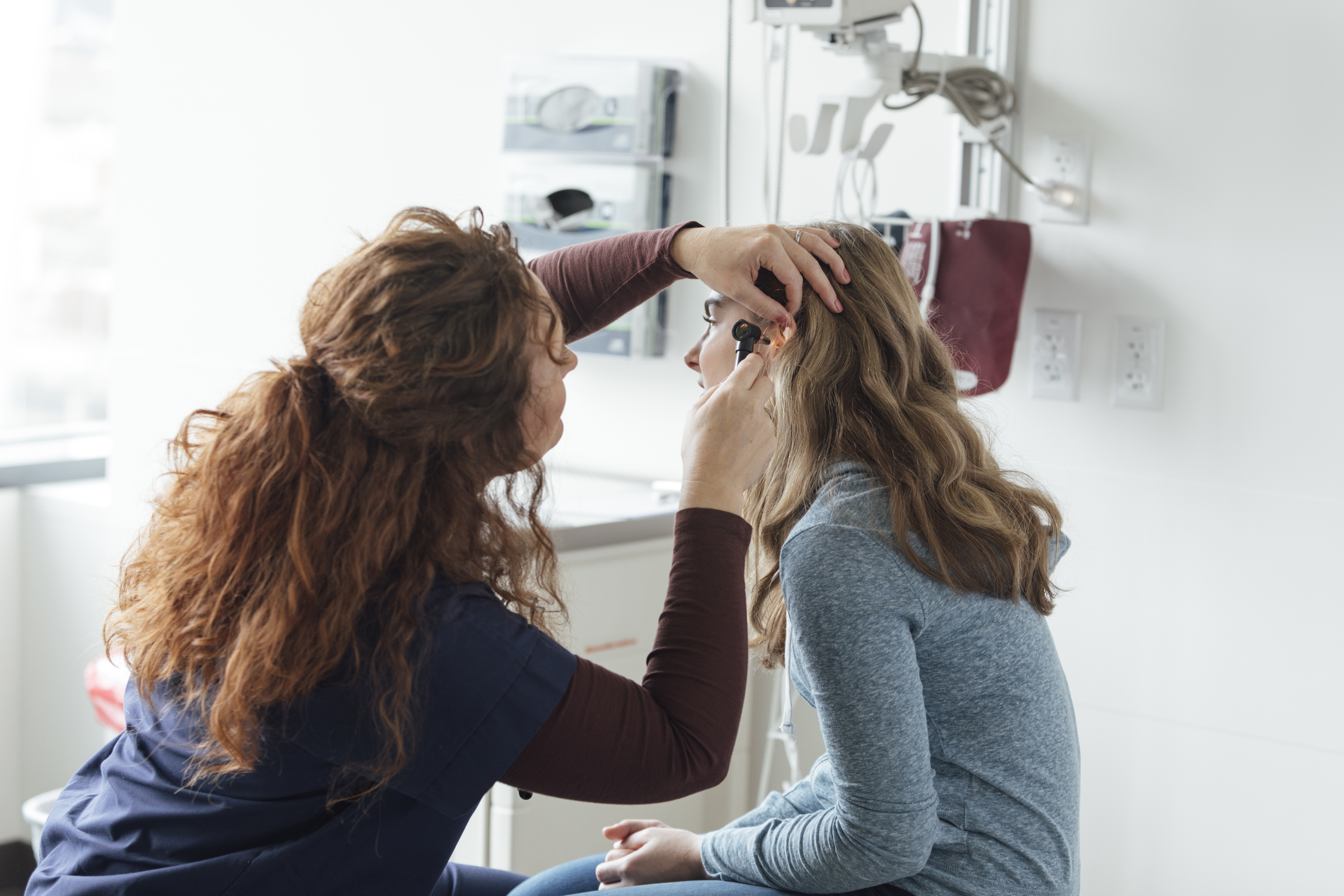" We ’ll have to picture out if our indemnity will shroud out - of - province care , how long the waiting lists will be , and , of course , the logistics of trying to pay for leave the State Department in general — hotel costs , gas , miss shoal and work , and childcare for our other three child . "
Katherine Bryantis a 41-year-old author and mom who lives in Delaware, Ohio. She often uses her TikTok account to talk about writing, pop culture, and being a parent. But now, she’s speaking out about how a new Ohio law is affecting her family.
Katherine starteda recent videoabout this issue, saying, “I know we’re all very excited about the presidential election in November. We’re all very excited. It’s hopeful. It’s feeling exciting, and we’re all jazzed, and we’re all ready to go. But I live in Ohio, andHouse Bill 68just passed two days ago, which means my kid can no longer access gender-affirming care.” She goes on to urge people to pay attention to their local elections, not just the presidential race. Local elected officials like State Supreme Court Justices can be the difference between a law like this going into effect vs. being struck down in court.
This new Ohio law, aka the Saving Adolescents from Experimentation (SAFE) Act,banstrans youth from accessing gender-affirming care like puberty blockers and hormones. It even puts limits on trans kids' ability to access mental health care. The bill also bans trans girls and women from competing in sports from kindergarten through college. The law originally passed in January but it justwent into effectin August.
Though the bill labels gender-affirming care for trans youth as “experimentation,“every major medical associationin the US has put out statements defining it as medically necessary and life-saving care. Laws like Ohio’s ban on this essential care disregard decades of scientific research and set a dangerous precedent for the state to intervene in decisions that should be made solely between an individual and their doctor.
These laws also put an undue burden on families like Katherine’s. She told BuzzFeed, “My child is transgender MtF, and had planned on waiting until fifteen to go on HRT. She turns 15 in a few weeks, and with this new bill, we will have to explore options outside of the state. We can either wait another year until she turns 16 and visit Planned Parenthood in Michigan (about a four-hour drive one way) or start looking for doctors in either Michigan, Pennsylvania, or Illinois that will take her on as a patient.”
And it doesn’t end with finding new care out of state. She explained, “We’ll have to figure out if our insurance will cover out-of-state care, how long the waiting lists will be now that Ohio and Indiana are both banning gender-affirming care, and, of course, the logistics of trying to pay for leaving the state in general — hotel costs, gas, missing school and work, and childcare for our other three children.” It’s a whole lot of costly moving parts — and likely many long hours on hold with insurance companies and healthcare providers.
Katherine also shared one of the biggest misunderstandings that other parents have about raising a trans kid. “I think the biggest thing people have to remember when navigating a child coming out as trans is that they’re still the same kid. My child’s journey was one of progression: First, it was her questioning her identity (probably around age seven or eight), then at around eleven, she started wanting to use they/them pronouns. As she got a little older, she started reading more about gender identity and the spectrum of gender. About a year ago, right after she turned fourteen, she came out as transgender.”
“Throughout that entire time, her love for martial arts didn’t change (she’s a second-degree black belt), the way she got annoyed with her younger siblings didn’t change, she didn’t stop eating ice cream and watching episodes ofNew Girlbefore bed, her favorite author remains Stephen King. The things that made her,her,didn’t change. The only thing that changed were the clothes she wore and how she labeled herself. I don’t have to understand it to be respectful of her identity, nor do I have to understand it to see how much my small act of just supporting her has helped her step into herself and her own power.”
Unfortunately, not every trans kid in Ohio or one of the other 22 states to ban youth gender-affirming care is lucky enough to have a parent like Katherine to support them. That’s one of the reasons she’s using her voice to oppose this law. “I would want trans kids that feel like their government isn’t protecting them to know that they have so many adults that are going to keep fighting for you. We see you and support you and love you and believe you. We’re going to keep pushing back because we want you to live in a world that sees the incredible gift that you are.”
Finally, I asked Katherine to tell me about the joyful side of raising her trans daughter. She said, “You know, I actually asked her about this. Because I know how I would answer this question, but I wanted to know what she thought as well. I’m in a few parent support groups, on Facebook mostly, and it really is just a constant stream of worry. Worry about bodily safety, about mental health struggles, and about the struggle kids face with their dysphoria. I think, as parents, we just have this constant need tofix it.But I think sometimes, when we’re in the trenches dealing with the struggles, we forget that there is an ocean of joy if we take a moment to see it.”
“My daughter talked about theKaleidoscope Youth Centeras one of her main sources of trans joy. It’s an LGBTQ+ center specifically for youth in our area. She attends a leadership program they have each summer and she said that discovering that community, kids that have similar lived experiences, gives her a strong sense of belonging.”
“I would also say there are small moments of joy. She got her first salon hairstyle about eight months ago: a cut, a blow-out, and curled. She’s got this beautiful long blonde hair, and having it done like that for the first time was such an affirming experience for her. She hates having her picture taken, which I think is par for the course for anyone who’s experienced any kind of dysphoria, but after she had her hair done, she took a selfie and sent it to all her friends. I don’t think I’ve ever seen her take a selfie once in her life, but I could see the euphoria in her eyes. The way she was soherself.It’s the same when she’s wearing an outfit that she feels really comfortable wearing, total euphoria. I get these glimpses of who she is and who she could be if society would just LET HER, and it’s really beautiful to watch.”
Peer - support service are useable at theTrans Lifeline . you’re able to call the hotline at 1 - 877 - 565 - 8860 .







